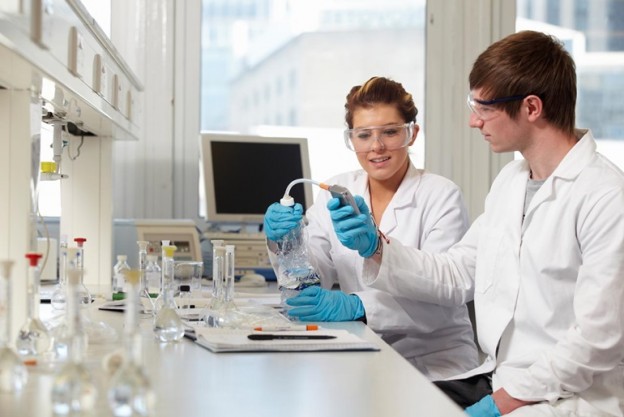Today seems like a good day to write ‘that’ blog. As the Women in Science, Engineering and Technology (WiSET) twitter feed pings away after a busy day at the WISE (Women in Science and Engineering) conference yesterday, the mixed feelings I have about the direction of travel in the gender equality in STEM (Science, Technology, Engineering and Maths) arena niggle away at me.
Don’t get me wrong, yesterday was a good day. I’ve been to many a gender equality conference and watched as wheels are reinvented, people nod earnestly at well-meaning declarations of intent and nothing moves on. Things are changing and it is clear that there are a host of individuals and teams driving the STEM equality and diversity agenda. Listening to companies like Bechtel and Hitachi talk of the increasing numbers of women in engineering was music to my ears, whilst stalwarts such as Network Rail and TfL (Transport for London) are to be applauded for taking risks in promoting initiatives to encourage more women into STEM before many others were prepared to take positive action – they are now reaping the rewards of those activities.
So, where do the mixed feelings come in? This is all good, right?
Well, to a point. Having been involved in promoting gender equality since the 1980s, it is incredibly rewarding to see some of the hard work pay off. The tone of the criticism levelled at teachers and career development professionals for not ‘promoting’ STEM careers has changed and acknowledges the fact that the issue of gender (and other areas of) equality runs far deeper than influencing the children and young people sitting before us. The thinking underpinning the EU funded ‘JIVE Project‘ that brought me to SHU was based on a holistic model, acknowledging that our career intentions are moulded and develop from a range of influences; including the media, our families, societal expectations and economic need. Alongside the JIVE Project, the UK Resource Centre for Women in SET (now WISE) worked with professional bodies, STEM employers, government departments and other stakeholders to try and bring about change.
SHU colleagues have been instrumental in influencing much of the work that took place during the late 90s and ‘noughties’ to create these projects and start organisations which set the foundations of today’s successful interventions. Much of the work was firmly aimed at changing policy to support women and bringing about lasting change. Linked to this, there was an acknowledgement that workplace culture needed to be addressed so that women were able to enter and progress in STEM, and we worked hard with large organisations nationally, regionally and locally to create inclusive practice.
So, the change in direction? Unsurprisingly, much of the public funding for STEM gender equality work has ceased, and the new WISE approach is to work with, mainly large corporate, employers and other organisations who pay a subscription fee. This mirrors arrangements by similar organisations such as BITC (Business in The Community) and Athena SWAN/Equality Challenge Unit and clearly brings a different style and tone to the work. Celebrating success through awards ceremonies and case studies is, of course, important and necessary to encourage others to follow suit. It allows the sharing of good practice and acknowledges the risks people have taken, and the effort made to bring about change. But the focus on large corporate organisations, often with slick marketing strategies and finely tuned corporate social responsibility agendas, can set the activities off in a slightly different direction and not always bring along the people ‘on the ground’. Smaller and medium sized companies are often passionate about encouraging women and girls into STEM (and other career areas) and need support to maintain momentum too.
As I said, today is a good day to write the blog. There is more intersectionality woven through STEM activities and there have been some great initiatives, particularly in the transport sector, over the last few years. Small charities like WEST (Women in Engineering, Science and Technology) raise awareness of barriers to success for women in STEM. WEST bursaries support women who need small amounts, for example to help them remain on their course, stay on an apprenticeship or start a small business. This blend of large scale initiatives and smaller, focused, activities are part of an overall picture that must continue to grow and change if the existing gains in equality, diversity and inclusion are to be maintained.
SIoE is typical of many organisations and hides its light beneath a bushel; it can do more to celebrate the expertise within the centre and to make best use of the research base we have developed. In over a decade WiSET has been helping external organisations to develop activities and embed practice to support women in STEM. Our team is now depleted but the resources and knowledge need not disappear. Bearing this in mind, I have created my own wish list for SIoE, in the hope that ‘putting our own house in order’ will permeate through the work that we do and those that we seek to influence:
- Acknowledge and encourage our female leaders and experts (including those specialising in gender equality and education), celebrate and showcase our successes
- Ensure that our systems and processes are transparent and fair, using the Athena SWAN process to examine this in detail and responding with a robust action plan
- Encourage new teachers and leaders in promoting and enacting gender equality, using our networks to share good practice
- Recognise that intersectionality is one way forward but that starting with gender often results in benefits for all
With our Pro Vice Chancellor, John Leach, driving the equality agenda in the faculty and across the institution, I am optimistic that we will continue to make positive progress.

Leave a Reply